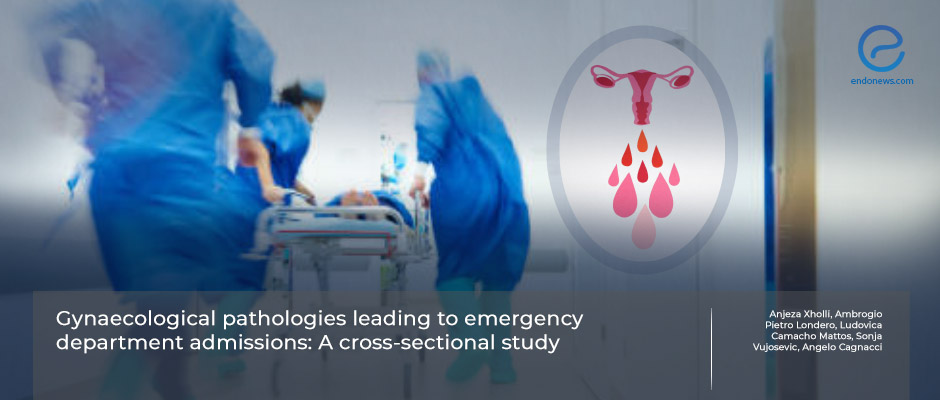The most common gynecologic admissions to the emergency: Endometriosis and adenomyosis
Feb 16, 2023
Women with endometriosis and adenomyosis commonly consult to the emergency department due to complaints related to the disease, especially pelvic pain.
Key Points
Highlights:
- Severe pelvic pain of endometriosis and adenomyosis may cause to present patients to the emergency department.
Importance:
- Women of reproductive age presenting to the emergency department for pelvic pain should be carefully evaluated for the presence of endometriosis and adenomyosis.
What’s done here?
- This cross-sectional study was conducted to detect the most frequent gynecologic reasons of reproductive-aged women for admission to the emergency department.
- Women under 18 years of age, pregnant or postmenopausal women were excluded.
- All patients were evaluated by experienced clinicians concerning ultrasound assessment of pelvic pathologies.
- Demographic and clinical characteristics were gathered from hospital records(age, parity, gynecological/non-gynecological pathologies, medications, contraception, clinical symptoms, and gynecological findings).
- Irregular bleeding, spotting, heavy menstrual bleeding, dysmenorrhea, dysuria, intermenstrual pain, low back pain, and bowel-related symptoms were also recorded.
Key results:
- A total of 461 women were included in the study.
- The most common symptoms as the reasons for admission to the emergency department were dysmenorrhea (42.7 %), heavy menstrual bleeding (33.2 %), and dyspareunia (21.0%).
- Dysmenorrhea was more common in women younger than 41 years while heavy menstrual bleeding was more frequent among women aged elder than 41 years.
- The most common gynecological pathology was adenomyosis (86.2%), followed by endometriosis (37.1%).
- Endometriosis was more frequently encountered in women younger than 41 years whereas women elder than 41 years were found to have adenomyosis more commonly.
- Among those, 391 women (84.8%) did not use any medication for any gynecological condition.
Strengths and Limitations:
- A comprehensive overview of a large population managed at a single center is the strength of the study.
- The retrospective design and non-surgical confirmation of gynecological diseases are major limitations.
- The results could not be generalized as the incidence of gynecological diseases and hospital conditions may vary between centers.
Lay Summary
Women with endometriosis demand therapy for the most common symptoms, which are pelvic pain and infertility. Adenomyosis occurs when the endometrial glandular and stromal tissue grows into the muscular wall of the uterus, called the myometrium. Women having adenomyosis also suffer from pelvic pain and heavy or prolonged menstrual bleeding. Medical or surgical treatment modalities can be suggested in the management of both endometriosis and adenomyosis.
Dr. Xholli et al. from Italy published a study titled “Gynaecological pathologies leading to emergency department admissions: A cross-sectional study” in the journal European Journal of Obstetrics & Gynecology and Reproductive Biology.
The authors aimed to investigate the most common gynecological diseases in reproductive-aged women for admission to the emergency department.
The most common gynecological pathology was adenomyosis (86.2%), followed by endometriosis (37.1%). Endometriosis was more frequently encountered in women younger than 41 years whereas women elder than 41 years were found to have adenomyosis more commonly. The most common symptoms as the reasons for admission to the emergency department were dysmenorrhea (42.7 %), heavy menstrual bleeding (33.2 %), and dyspareunia (21.0%), respectively.
“Appropriate chronic management of these pathologies may lead to a considerable reduction in emergency department presentations and better resource allocation,” the authors added.
Research Source: https://pubmed.ncbi.nlm.nih.gov/36630817/
endometriosis adenomyosis leiomyomas emergency department dysmenorrhea pelvic pain heavy menstrual bleeding

